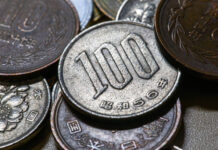Markets
Following a warming-up lap during European dealings, US investors went at it again. An empty eco/event calendar didn’t stop them from going for the cycle highs in yields. US yields added 5.8 bps (2-yr) to 8.5 bps (10-yr) with the 2-yr yield closing marginally above the psychological 5% mark, the 5-yr yield testing the cycle high at 4.5%, the 10-yr yield ending at the highest level (4.34%) since 2007 and the 30-yr yield (4.45%) finishing at its best level since 2011. The underlying force? You guessed it… higher real rates! The US 10-yr real rate traded north of 2% intraday for the first time since March 2009. European, UK and even Japanese bond yields join the journey higher. German yields rose by 6.8 bps to 8.2 bps yesterday with he belly of the curve underperforming the wings. Unlike most previous sessions, higher real rates didn’t translate into heavy stock markets and a firmer dollar. On the contrary, a tech rally resulted in a 1.5% gain for the Nasdaq. The Dow Jones ended flat with the S&P winning around 0.7%. The outcome in Europe was more mixed with key 4200 support in the EuroStoxx 50 fighting to live another day. The trade-weighted dollar’s rise is blocked by first resistance at 103.57 while EUR/USD still didn’t test 1.0834 support. The pair ended at 1.0896 yesterday from an open at 1.0877. EUR/GBP ended broadly flat at 0.8545 with the low 0.85-support area remaining untested as well.
Overnight risk sentiment is generally positive with China exception to the rule. The PBOC’s CNY fixing deviated again big time compared to expectations as the central bank tries to slow the currency’s descent. USD/CNY has been toying with the 7.30 2022 high for the past couple of sessions. Core bonds tread water with the dollar slightly in the defensive. Today’s eco calendar is again razor thin with second tier US existing home sales (July) and the Richmond Fed Manufacturing Index (August). We don’t expect them to interact with trading. The path of least resistance remains south for core bonds despite resistance levels in yield terms. For more fundamental trading drivers, we wait for tomorrow’s PMI’s and Friday’s Jackson Hole Symposium by the Kansas City Fed. Both Fed Chair Powell and ECB President Lagarde are scheduled to deliver high profile speeches, setting the tone for policy rate decisions in September. Our preferred scenario (25 bps rate hikes by both) isn’t discounted in money markets.
News and views
The Federal Reserve Bank of New York’s SCE labour market survey showed that the average wage received by American workers for a full time job was sharply higher in July 2023 ($69,475), compared with July of last year ($60,764). The average reservation wage (the lowest wage respondents would be willing to accept for a new job) reached its highest reading of $78,645. However, at the same time there were also signs of an easing in the job market. The expected likelihood of moving to a new employer declined somewhat to 10.6% from 11.0% in July 2022, while the average expected likelihood of becoming unemployed increased to 3.9% from 2.3% in July 2022, the highest reading since March 2020. The average expected likelihood of working beyond age 62 declined to 47.7% from 48.8% in July 2022, the lowest reading since the start of the series in March 2014. The series has largely been on a downward trend since November 2020.
According to long-term economic forecasts to be published by the Australian government on Thursday (seen before by Reuters), the country’s economic growth over the next 40 years is expected to structurally decline due an aging of the population and a decline in population growth. Real gross domestic product (GDP) is forecast to grow 2.2% annually over the 40 years to fiscal 2063, a full 0.9 percentage point slower than the previous four decades. The economy is expected to be around 2.5 times larger in real terms 40 years hence.











